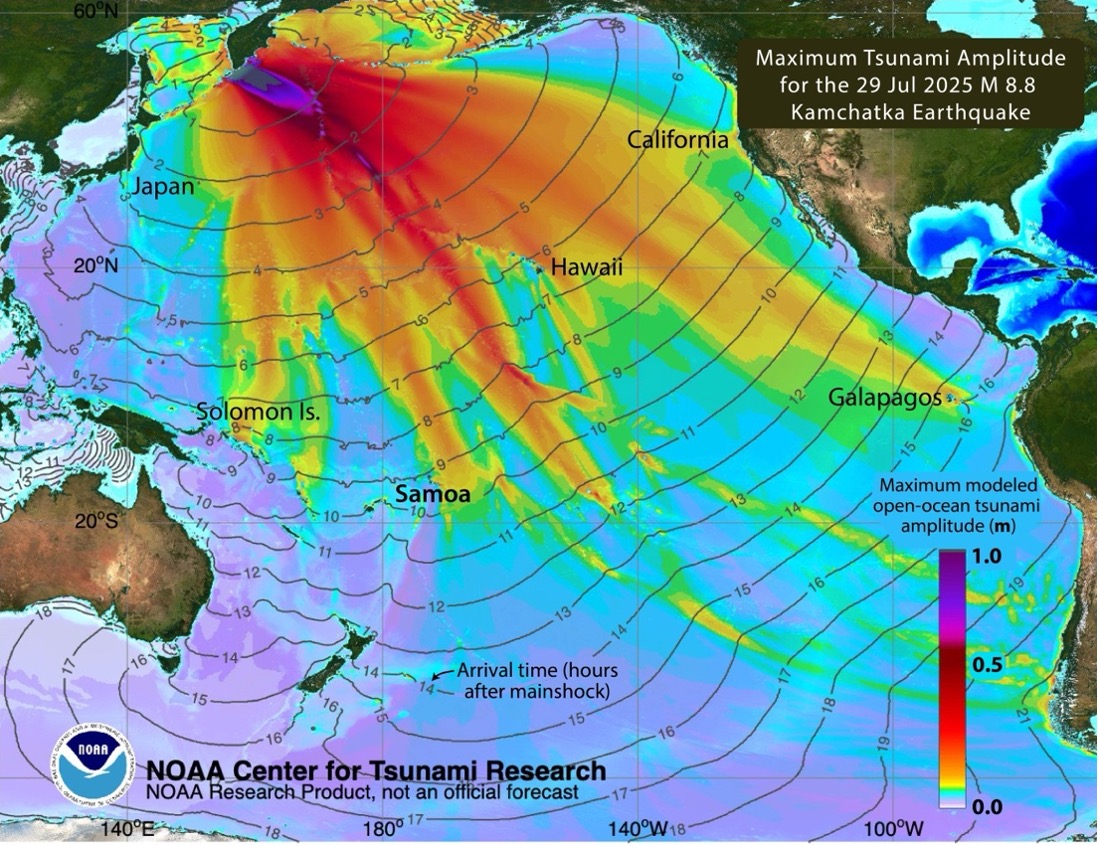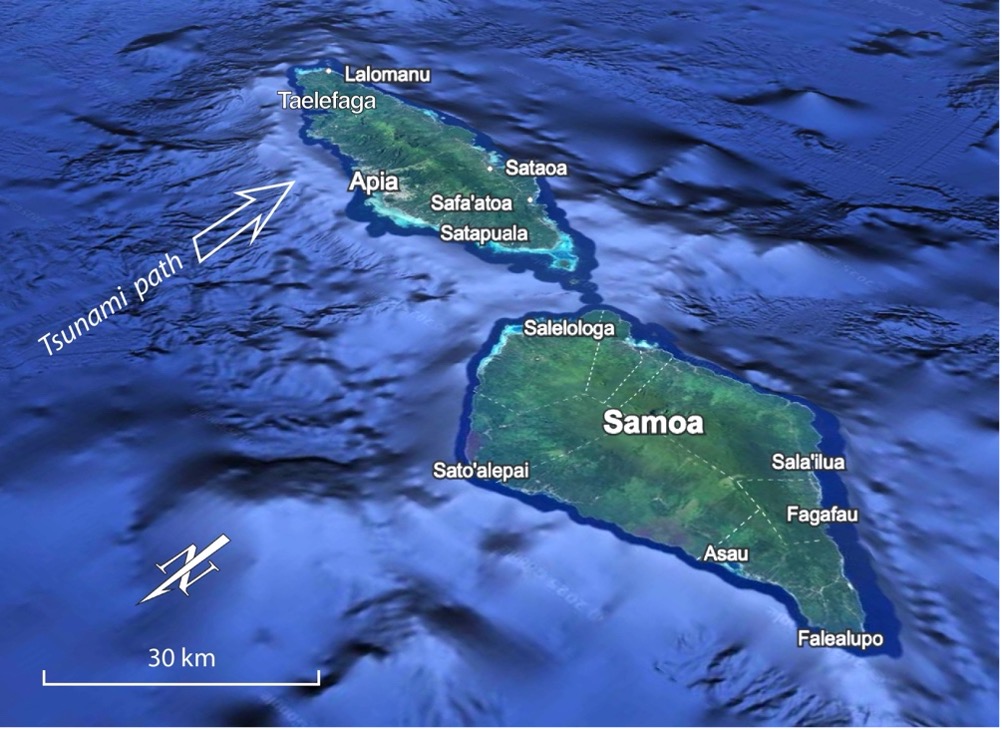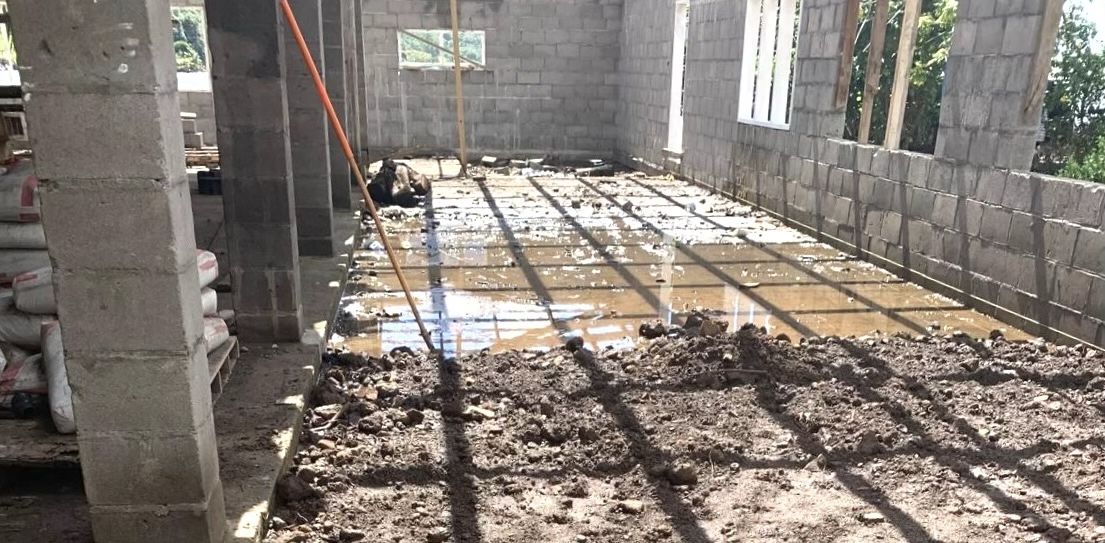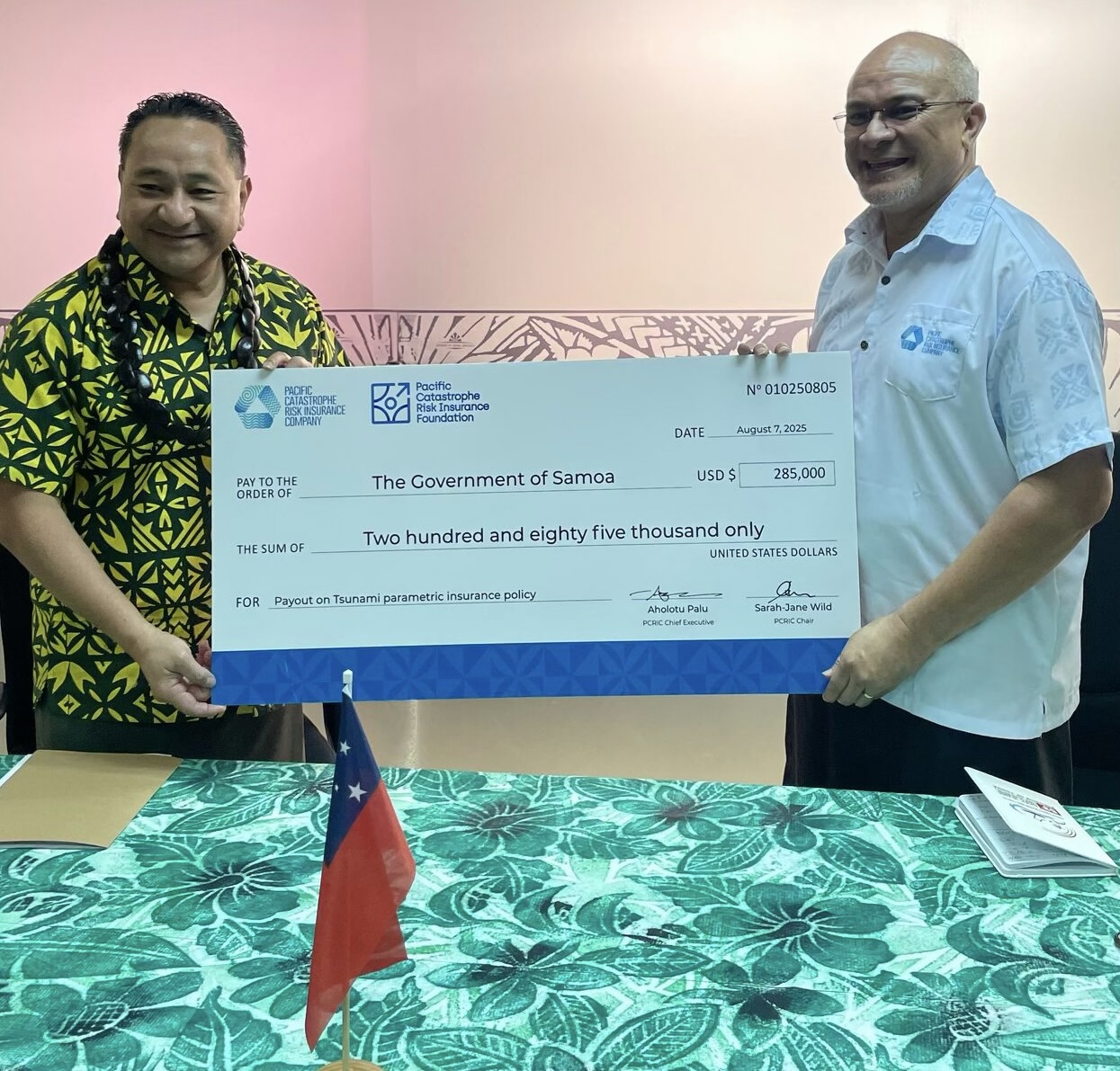Just 10 days after the Kamchatka tsunami hit its shores, the island nation of Samoa received a payout from the Pacific Catastrophe Risk Insurance Company (PCRIC), a regional development insurer.
By Gabriel C. Lotto and Ross S. Stein, Temblor, Inc.
Citation: Lotto, G.S. and Stein, R.S., 2025, 2025 Kamchatka tsunami triggered rapid insurance payout in the South Pacific, Temblor, http://doi.org/10.32858/temblor.367
The July 29, 2025 magnitude 8.8 Kamchatka earthquake triggered a tsunami that enveloped the Pacific basin. The earthquake occurred because of subduction, a process in which the Pacific plate was shoved about 10 meters under the Kamchatka peninsula, lifting and dropping a portion of the seafloor spanning 100 kilometers by 400 kilometers. Gravity then pulled the column of displaced water back down, creating waves that spread across the ocean, traversing the entire Pacific basin in about 21 hours.

In the past 30 years, tsunamis launched by the 2004 magnitude 9.1 Sumatra, 2010 magnitude 8.8 Maule, and 2011 magnitude 9.1 Tohoku earthquakes destroyed local and far-flung coastal communities. Island populations, too, were hit by these tsunamis — some without warning.
Today, NOAA’s Pacific Tsunami Warning Center issues Threat Messages for affected populations in the Pacific and Caribbean basins based on rapid modeling of tsunami propagation, tempered by available real-time observations. Governments take these messages and issue tsunami warnings to their denizens. The Pacific Catastrophe Risk Insurance Company (PCRIC) is harnessing these messages to create simple and inexpensive tsunami insurance policies to offer to Pacific Island nations.

Threat Message issued by the Pacific Tsunami Warning Center
Nine hours after the magnitude 8.8 earthquake struck off the Kamchatka peninsula, its tsunami reached Samoa, 11,000 kilometers from the epicenter. The tsunami had sped across the Pacific Ocean at 1,200 kilometers per hour (700 miles per hour), slightly faster than a commercial jet plane. Of Samoa’s two largest islands, the eastern island of Upolu experienced damage, particularly in northeastern coastal villages.
But before that, about two hours after the mainshock, the Pacific Tsunami Warning Center issued this message:
“TSUNAMI WAVES REACHING 1 TO 3 METERS ABOVE THE TIDE LEVEL ARE POSSIBLE ALONG SOME COASTS OF … SAMOA
ESTIMATED TIME OF ARRIVAL AT APIA, SAMOA: 0858 07/30 UTC”
Subsequent Pacific Tsunami Warning Center Threat Messages reported the observed arrival time in Samoa and the maximum wave height recorded on a harbor tide gage:
APIA UPOLU WS 0943 UTC 0.81M
This warning provided 7 hours and 10 minutes of critical lead time before the tsunami struck, allowing for the government of Samoa to prepare its citizens and brace for the possible emergency. The 0.81-meter tsunami recorded at the tide gauge along the coast was slightly less than the 1-to-3-meter estimate from Pacific Tsunami Warning Center. But this is typical for harbor gauges, which often underestimate the height along unprotected shores, and so the forecast was likely quite accurate.
Save lives, save money
To enable rapid insurance payment — and to promote mitigating actions in the hours before the tsunami arrives — the payout from PCRIC is triggered by the Pacific Tsunami Warning Center Threat Message, rather than by post-event damage inspections or satellite image interpretations of tsunami run-up or destruction. This means that if a Threat Message predicts a tsunami over 1 meter, the government will be paid regardless of the actual size of the tsunami (and if the tsunami amplitude reaches 3 meters, it will be paid three times more).
So, the authorities know that their emergency response — issuing cell phone and siren alerts, sending emergency responders to the likely affected coastlines, and distributing food and shelter before the wave hits — will effectively be reimbursed. This encourages the government to act in the crucial hours before the waves crash ashore, reinforcing its life saving role.

Temblor’s role
Threat Messages in their present form have only been issued for about eight years — a record too short to estimate the probability of their issuance given the rarity of damaging tsunamis. So, Temblor used its 50,000-year stochastic event set (50,000 simulations of next year’s earthquakes) and the relationship between earthquake magnitude and distance to shore, to estimate those frequencies. Funding for Temblor’s tsunami model development came from the World Bank.
Understanding the frequency of Threat Messages for any country enables the policy to be priced. With that information from Temblor’s models, the policies were structured by the intermediary, Willis Towers Watson, who also placed the reinsurance in international markets. PCRIC issued the policies. In the inaugural year for this new stand-alone tsunami policy (which began in November of 2024), the Pacific Island Countries of Tonga, Samoa, and Vanuatu secured policies with PCRIC, with more nations likely to join in the future.

Bottom Line
Backed by the World Bank, donor nations, and a regional catastrophe insurer, Pacific Island nations are preparing themselves for tsunamis with straightforward and affordable insurance keyed to NOAA’s Pacific Tsunami Warning Center message products. The policy design encourages mitigating actions before the wave hits and pays out within days afterwards. This design not only saves money, but also lives.
Reviewed by:
Nicolas Pondard, Ph.D., Advisor to the World Bank and PCRIC
Julian Roberts, M.Sc., Managing Director, Willis Towers Watson
Barry Hirshorn, M.Sc., UCSD Scripps
Laura Kong, Ph.D., Director, International Tsunami Information Centre
Copyright
Text © 2025 Temblor. CC BY-NC-ND 4.0
We publish our work — articles and maps made by Temblor — under a Creative Commons Attribution-NonCommercial-NoDerivatives 4.0 International (CC BY-NC-ND 4.0) license.
For more information, please see our Republishing Guidelines or reach out to news@temblor.net with any questions.
- Magnitude 7 Yukon-Alaska earthquake strikes on the recently discovered Connector Fault - December 8, 2025
- Upgrading Tsunami Warning Systems for Faster and More Accurate Alerts - September 26, 2025
- April 2025 magnitude 6.2 earthquake near Istanbul highlights strengths and weaknesses in seismic mitigation - September 14, 2025
